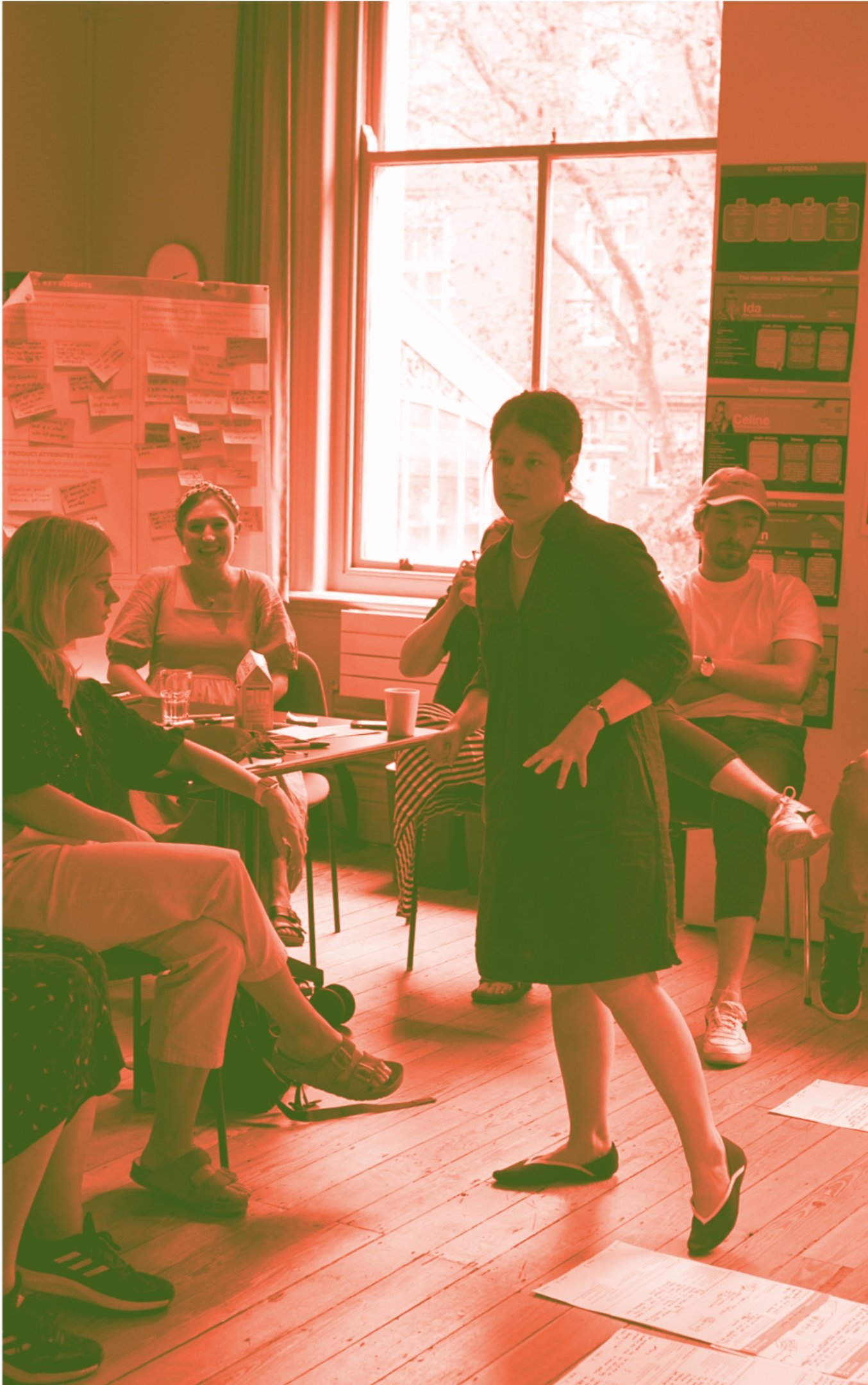Multinational food manufacturer, 23.5bn revenue, 315k employees
“Rebuild our product portfolio from the ground up for one of our beverage brands. Help us respond to market shifts and align our portfolio growth with a consumer-relevant innovation pipeline.”
Approach
Cohere innovation efforts across five markets
Scope a future portfolio framework with Marketing, Insights and R&D leaders
Facilitate a series of sprints to populate the portfolio framework with prioritised and scoped innovation projects
Validate market opportunities with consumers
Conduct consumer research (focus groups) across markets to validate appeal and local relevance of prioritised innovations
Cross-Market alignment
Europe is a complicated market. Usually lumped together with the African continent as EMEA. No surprises that regions often disagree. What works in France or Italy, will probably raise eyebrows in the DACH region. With prioritised innovation concepts developed during sprints, one can quickly move into testing. There are numerous testing methods available from in-person focus groups to online ‘social’ platforms, surveys, Zappi or VoxPop. This early testing de-risks innovation projects and allows for iteration and adjustments across regions. This does not only work in EMEA but any other region that wants to get under the skin of regional nuances.
5-year Innovation Pipeline
Before getting stuck into ideating possible innovation projects, a framework can be helpful in ensuring ideas align with strategic objectives and market opportunities. Ideation for its own sake usually produces a lot of ideas that aren’t original, strategically relevant or considered with the business in mind. There is a case to be made for explorative ideation, however in order to successfully manage innovation it behooves teams to consider the constraints they’re working in at the very start. Considerations could be for example existing capabilities, financial means, risk, regulations and consumer demands.
A successful pipeline has a balance of low, medium and high risk projects, allowing for exploitation and exploration. Involving stakeholders from Insights, Marketing and R&D in sprints allows for quick initial evaluation of innovation projects on desirability, feasibility and viability, assessing risk in the room and weeding out ideas that aren’t realistic or possible in the near future. Cross-functional alignment can be managed through focussed discussions and engaging activities.
Product Launch
Some projects on the pipeline will be considered ‘low hanging fruit’ or ‘quick-wins’. If done right, the ideation framework will have revealed such opportunities at the very start of the process. It will also have regurgitated design criteria that can easily be fulfilled using existing assets and capabilities, hence the term ‘quick-wins’. They are no-brainers that can be launched quickly into market with little to no risk. However it is advised to consider what those launches will do to the existing portfolio: will it generate incremental value, or merely dilute demand?
Keywords: strategy, innovation, stakeholder alignment, market strategy, product development, facilitation, agile, sprints, change, portfolio, pipeline







